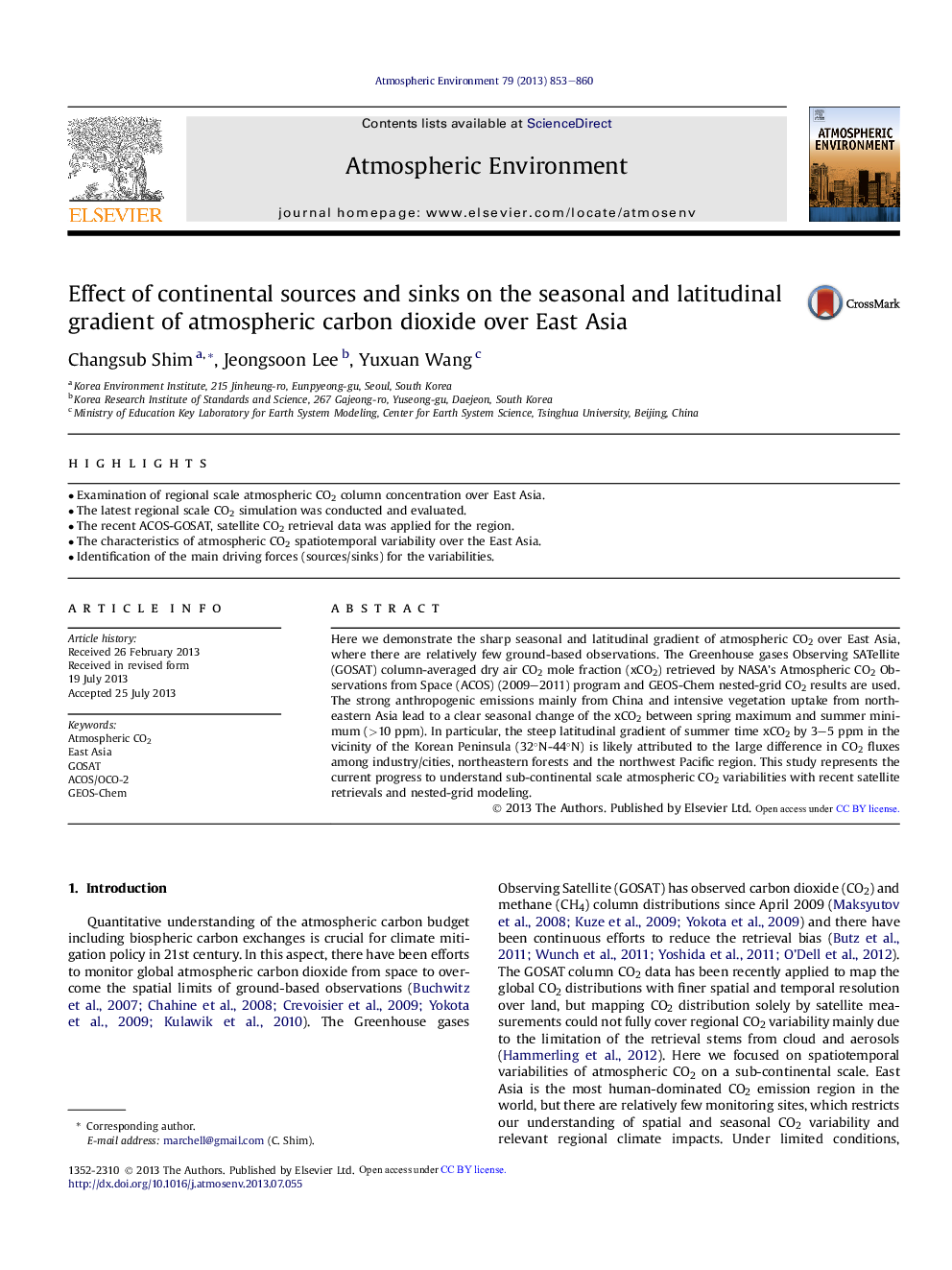| Article ID | Journal | Published Year | Pages | File Type |
|---|---|---|---|---|
| 6341607 | Atmospheric Environment | 2013 | 8 Pages |
â¢Examination of regional scale atmospheric CO2 column concentration over East Asia.â¢The latest regional scale CO2 simulation was conducted and evaluated.â¢The recent ACOS-GOSAT, satellite CO2 retrieval data was applied for the region.â¢The characteristics of atmospheric CO2 spatiotemporal variability over the East Asia.â¢Identification of the main driving forces (sources/sinks) for the variabilities.
Here we demonstrate the sharp seasonal and latitudinal gradient of atmospheric CO2 over East Asia, where there are relatively few ground-based observations. The Greenhouse gases Observing SATellite (GOSAT) column-averaged dry air CO2 mole fraction (xCO2) retrieved by NASA's Atmospheric CO2 Observations from Space (ACOS) (2009-2011) program and GEOS-Chem nested-grid CO2 results are used. The strong anthropogenic emissions mainly from China and intensive vegetation uptake from northeastern Asia lead to a clear seasonal change of the xCO2 between spring maximum and summer minimum (>10 ppm). In particular, the steep latitudinal gradient of summer time xCO2 by 3-5 ppm in the vicinity of the Korean Peninsula (32°N-44°N) is likely attributed to the large difference in CO2 fluxes among industry/cities, northeastern forests and the northwest Pacific region. This study represents the current progress to understand sub-continental scale atmospheric CO2 variabilities with recent satellite retrievals and nested-grid modeling.
